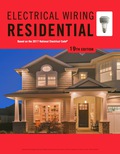Problem 2: BJT small-signal amplifier. Vcc=10V Rsly ли 가 sig(t) Sig (t) ZRBIP REP W 818 HH P No(+) 178 Rep R₁ RBZP Let the PNP BJT QP properties be{VEBP=0.7V if the EB junction is ON, B = 100 and Early voltage VA = 100V}. The internal resistance of the input signal source Vsig(t) is Rsig = 2002. The load resistance is RL = 10KQ. You cannot change the source resistance nor the load. Let RBIP = RB2P = 40KQ. Let REP = 3.9K and let Rcp=3KN. 2.a Find the DC voltages and currents of the amplifier, the BJT's small-signal parameters, and draw the small-signal diagram of the amplifier. Is the Active Mode assumption true? 2.b Find the amplifier's small-signal input resistance Rin and the small-signal voltage gain. 2.c Find the maximum allowed amplitude of Vsig(t), assuming that the amplitude of the small signal Veb(t) must not exceed 10mV. 2.d Modify one of the resistors in order to increase the voltage gain by 20%. Hint: It would be the simplest to tweak the only resistor that has nothing to do with setting the DC current Icp.
Let the PNP BJT QP properties be{VEBP = 0.7V if the EB junction is ON, β = 100 and Early voltage
VA = 100V}. The internal resistance of the input signal source vsig(t) is Rsig = 200Ω. The load
resistance is RL = 10KΩ. You cannot change the source resistance nor the load. Let RB1P = RB2P =
40KΩ. Let REP = 3.9KΩ and let RCP = 3KΩ.
2.a Find the DC voltages and currents of the amplifier, the BJT’s small-signal parameters, and
draw the small-signal diagram of the amplifier. Is the Active Mode assumption true?
2.b Find the amplifier’s small-signal input resistance Rin and the small-signal voltage gain.
2.c Find the maximum allowed amplitude of vsig(t), assuming that the amplitude of the small signal
|veb(t)| must not exceed 10mV.
2.d Modify one of the resistors in order to increase the voltage gain by 20%. Hint: It would be the
simplest to tweak the only resistor that has nothing to do with setting the DC current ICP.

Step by step
Solved in 2 steps with 4 images


